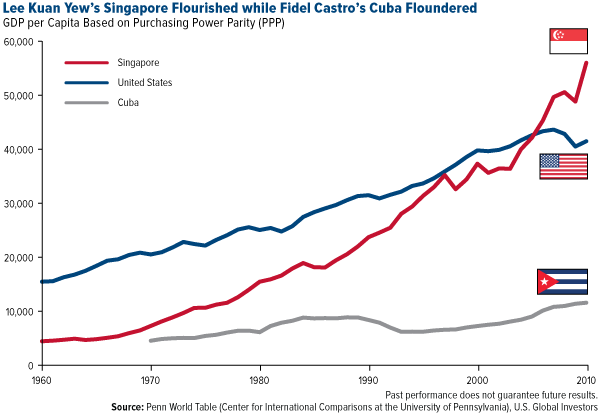Seeing how the real standard of living took a plunge after the worldwide financial crisis, it is unsurprising that the public has voted for Brexit or elected Donald Trump as President of the United States, investment guru Marc Faber said at the International CEE Investment Conference, organised by CFA Society Poland and CFA Institute last weekend. Faber expressed concern over negative interest rates, admitting he was at a loss as to what could bring the era of negative rates to an end. Another topic on the conference agenda was the growing role of politics in the global economy, and how the proliferation of political ideologies is increasingly becoming a cause for concern even to rating agencies when it comes to upgrading or downgrading a particular country.
read more @http://www.portfolio.hu/en/economy/marc_faber_current_era_of_negative_rates_a_historic_first.32147.html
Wealth Building Strategies
“for individual investors, the Republic of Georgia is ripe with opportunity” “when the Georgian government abolished its previous Byzantine tax code and adopted a simple, low, flat tax model, government tax doubled” investors are “still earning over 7% on their US dollar deposits”
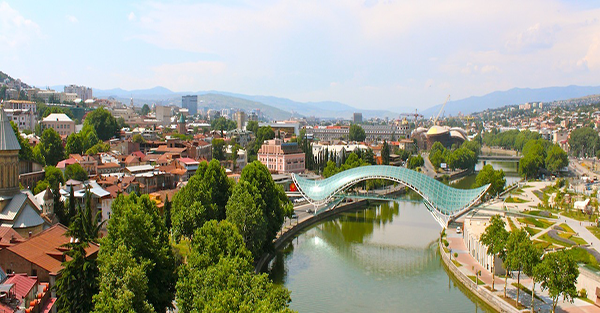 Simon Black sent me to the former Soviet republic of Georgia to spend some time on the ground conducting due diligence on some potential private investments.
Simon Black sent me to the former Soviet republic of Georgia to spend some time on the ground conducting due diligence on some potential private investments.
Georgia is a fantastic country that Simon has been to several times, and the opportunities here are simply amazing.
It’s not that Georgia has more opportunities than Europe, the US, and the rest of the world. Investment opportunities are everywhere.
The difference here is that Georgia is totally off the radar of most investors.
It’s a tiny country of 4 million people with a GDP of roughly $36 billion. That’s about half the size of the economy of New Hampshire.
And the total stock market capitalization is just a fraction of Uber’s most recent market value.
This means that it’s very difficult for large, institutional investors to put money to work in this country.
They need big scale… economies where they can easily deploy billions of dollars. There simply aren’t enough of those supersized opportunities here.
That’s why you won’t see a bunch of hedge fund managers on CNBC talking about their investment positions in the Republic of Georgia. It’s too small for them.
But for individual investors, Georgia is ripe with opportunity.
…related:

On Friday, November 25, Fidel Castro died at age 90. The former revolutionary and hardline dictator of Cuba was among the 20th century’s longest-serving leaders, third only to Elizabeth II and Bhumibol Adulyadej, the King of Thailand, who passed away in October.
Castro’s death comes at a pivotal moment in U.S.-Cuban relations. With trade between the two countries on the path to normalization, and with U.S. airlines making scheduled flights to Havana for the first time in more than 50 years, President-elect Donald J. Trump has pledged to reinstate many of the Cold War embargos that were lifted by President Barack Obama.
“If Cuba is unwilling to make a better deal for the Cuban people, the Cuban/American people and the U.S. as a whole, I will terminate deal,” Trump tweeted on November 28.
In light of Castro’s passing, we are rerunning this Frank Talk from March 2015, in which Frank compares and analyzes the widely divergent economies of Cuba and Singapore under their now-deceased leaders, Castro and Lee Kuan Yew.
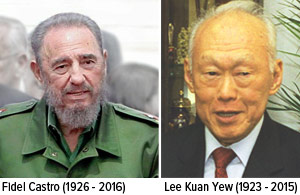
It would be nearly impossible to find two world leaders in living memory whose influence is more inextricably linked to the countries they presided over than Cuba’s Fidel Castro and Singapore’s Lee Kuan Yew, who passed away this Monday at the age of 91.
You might find this hard to believe now, but in 1959—the year both leaders assumed power—Cuba was a much wealthier nation than Singapore. Whereas Singapore was little more than a sleepy former colonial trading and naval outpost with very few natural resources, Cuba enjoyed a thriving tourism industry and was rich in tobacco, sugar and coffee.
Fast forward about 55 years, and things couldn’t have reversed more dramatically, as you can see in the images below.
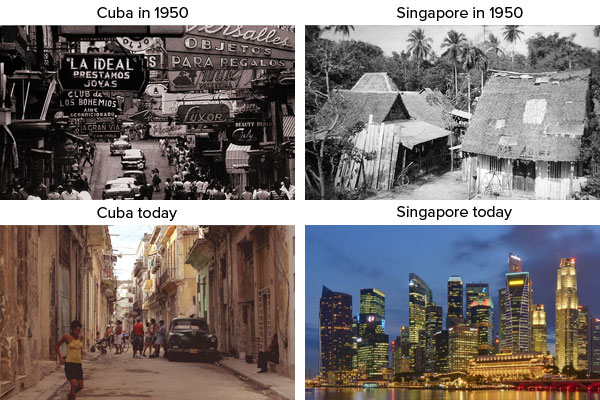
The ever-widening divergence between the two nations serves as a textbook case study of a) the economic atrophy that’s indicative of Soviet-style communism, and b) the sky-is-the-limit prosperity that comes with the sort of American-style free market capitalism Lee introduced to Singapore.
Sound fiscal policy, a strong emphasis on free trade and competitive tax rates have transformed the Southeast Asian city-state from an impoverished third world country into a bustling metropolis and global financial hub that today rivals New York City, London and Switzerland. Between 1965 and 1990—the year he stepped down as prime minister—Lee grew Singapore’s per capita GDP a massive 2,800 percent, from $500 to $14,500.
Since then, its per capita GDP based on purchasing power parity (PPP) has caught up with and zoomed past America’s.
Under Castro and his brother Raúl’s control, Cuba’s once-promising economy has deteriorated, private enterprise has all but been abolished and the poverty rate stands at 26 percent. According to the CIA’s World Factbook, “the average Cuban’s standard of living remains at a lower level than before the collapse of the Soviet Union.” Its government is currently facing bankruptcy. And among 11.3 million of Cuba’s inhabitants, only 5 million—less than 45 percent of the population—participate in the labor force.
Compare that to Singapore: Even though the island is home to a mere 5.4 million people, its labor force hovers above 3.4 million.
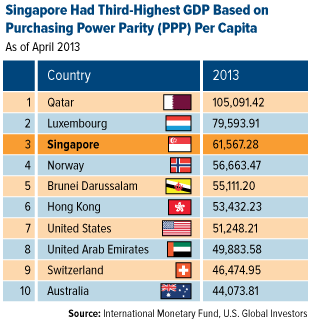 |
Because of the free-market policies that Lee implemented, Singapore is ranked first in the world on the World Bank Group’s Ease of Doing Business list and, for the fourth consecutive year, ranked second on the World Economic Forum’s Global Competitiveness Report. The Heritage Foundation ranks the nation second on its 2015 Index of Economic Freedom, writing:
Sustained efforts to build a world-class financial center and further open its market to global commerce have led to advances in… economic freedoms, including financial freedom and investment freedom.
Cuba, meanwhile, comes in at number 177 on the Heritage Foundation’s listand is the “least free of 29 countries in the South and Central America/Caribbean region.” The Caribbean island-state doesn’t rank at all on the World Bank Group’s list, which includes 189 world economies.
Many successful international businesses have emerged and thrived in the Singapore that Lee created, the most notable being Singapore Airlines. Founded in 1947, the carrier has ascended to become one of the most profitable companies in the world. It’s been recognized as the world’s best airline countless times by dozens of groups and publications. Recently it appeared on Fortune’s Most Admired Companies list.
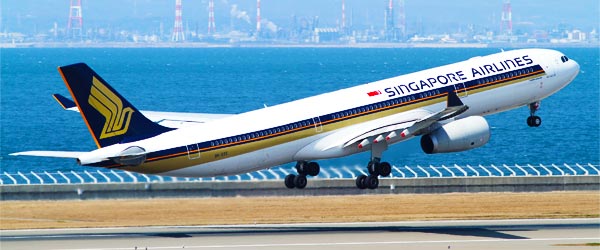
We at U.S. Global Investors honor the legacy of Lee Kuan Yew, founder of modern-day Singapore. He showed the world that when a country chooses to open its markets and foster a friendly business environment, strength and prosperity follow. Even on the other side of the globe, the American Dream lives on.
The Global Competitiveness Index, developed for the World Economic Forum, is used to assess competitiveness of nations. The Index is made up of over 113 variables, organized into 12 pillars, with each pillar representing an area considered as an important determinant of competitiveness: institutions, infrastructure, macroeconomic stability, health and primary education, higher education and training, goods market efficiency, labor market efficiency, financial market sophistication, technological readiness, market size, business sophistication and innovation.
The Ease of Doing Business Index is an index created by the World Bank Group. Higher rankings (a low numerical value) indicate better, usually simpler, regulations for businesses and stronger protections of property rights.
The Index of Economic Freedom is an annual index and ranking created by The Heritage Foundation and The Wall Street Journal in 1995 to measure the degree of economic freedom in the world’s nations.
Holdings may change daily. Holdings are reported as of the most recent quarter-end. None of the securities mentioned in the article were held by any accounts managed by U.S. Global Investors as of 9/30/2016.
All opinions expressed and data provided are subject to change without notice. Some of these opinions may not be appropriate to every investor. By clicking the link(s) above, you will be directed to a third-party website(s). U.S. Global Investors does not endorse all information supplied by this/these website(s) and is not responsible for its/their content.

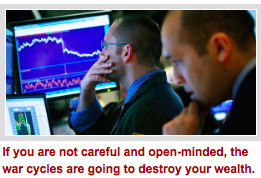 “the war cycles are increasing in intensity each and every year for the next four to five years. They are going to alter everything you thought you knew about the economy … about the markets … about politics and politicians … foreign affairs and more”
“the war cycles are increasing in intensity each and every year for the next four to five years. They are going to alter everything you thought you knew about the economy … about the markets … about politics and politicians … foreign affairs and more”
I hope you had a wonderful Thanksgiving weekend with family and friends. I did!
But now, it’s back to work. It’s back to protecting and growing your wealth. And that’s more important than ever!
The chief reason — and I’ll keep harping on this until I’m blue in the face — is the ramping up of the war cycles. They’ve been ramping up since late 2013.
Now they are already wreaking havoc in Washington. They already caused Britain to Brexit. And now Italy could be next, followed by France. Then Spain. Greece, and more.
They overthrow Hillary here in the U.S. with its anti-establishment undertone, just as I predicted they would.
And the war cycles are increasing in intensity each and every year for the next four to five years. They are going to alter everything you thought you knew about the economy … about the markets … about politics and politicians … foreign affairs and more.
If you are not careful and open-minded, they are going to destroy your wealth.
Let’s get something straight. I am not a pessimist. I am not an “end of the world” type analyst. I am simply a historian, steeped in how governments and markets are cyclical in nature, and how those who don’t learn from history are doomed to repeat the mistakes of the past.
The war cycles are real. They are documented and scientifically proven and based on over 14,000 wars spanning 5,000 years of civilization. I have studied them in great detail. They are ramping up big time and they will have a profound impact on everything.
What is behind the war cycles? What drives society and the world to enter turbulent times?
There are two forces: The private economy and the public sector, government.
In the best of times, when the interests of the private and public sectors are aligned, you get as close a partnership as you can get between the private and public sectors.
There’s good economic growth. There’s cooperation. There’s rising employment, little or no inflation, increased productivity. And most of all, accepting the status quo amongst our leaders.
But in the worst of times, when the underlying economy goes into a bust period, as it has been doing since the year 2000 — you get a divide between the public and the private sectors. A divide that only gets worse with time.
It may seem that their interests are still aligned. After all, both the government and the private sector want the economy to get back on track, employment to rise again and everything to be A-OK.
But in bad economic times, the self-interest of government rises to the top.
Seeing diminished revenues and unable to curtail spending, governments start to go broke. As they go broke, they turn against their citizens and seek more ways to soak money from them while at the same time cutting and even reneging on promises.
Think India. Now banning the use of large bills. Think Europe. Limits on ATM withdrawals and more.
Meanwhile, central banks try to paper over the mess, printing money with reckless abandon.
As the tensions mount between the public and private sectors, protests erupt. There are tax revolts. Riots in the streets. Secession movements. Civil strife.
Between nations, governments battle their own self-interests, with currency wars, protectionism, trade barriers, capital controls, and more.
Religious battles intensify. And if leaders don’t act appropriately — which they almost never do — all hell can break loose, leading to domestic and international conflict.
Front and center is none other than your wealth. The purchasing power of your money. The life of hard work you devoted to your family and its financial security. Your liberties. Your privacy.
For in the end, bankrupt governments want to grab your money to make themselves whole.
They engage in propaganda and desperate socialist moves to spread the wealth in some utopian vision of the world that is really nothing more than grabbing everyone’s wealth to feed a monster that is going belly up.
Think of the British and the American revolution. The original Tea Party and “no taxation without representation.” Think of the French Revolution. The fall of Rome and Byzantium.
In each and every one of those instances, and countless others, government crossed the line and invaded the private sector first, confiscating wealth to pay for its mistakes to desperately try and survive.
In times like those — the single best thing you can do is to think independently.
Question everything governments say and do. They will be acting entirely out of self-interest. They will deceive you, lie to you, all the while they are reaching into your back pocket to grab what they think is theirs.
Fortunately, today we have a slew of liquid markets where you can protect yourself and even grow your money. But again, it all depends on your ability to think for yourself.
Think it would be any different if Hillary won? No, it wouldn’t be. All of this is written in stone being played out before your very eyes.
Best wishes, stay safe and well,
Larry

 Plus – Marc Faber: Current era of negative rates “a historic first”
Plus – Marc Faber: Current era of negative rates “a historic first”

I hate bonds as much as the next guy. I’ve been telling investors to stay the heck away from them for a long time. But man, this selloff in the government debt market is getting nuts. Treasuries are now the most oversold they’ve been in the 43-year history of a benchmark bond index tracked by Bloomberg, according to this story. Makes you wonder if a reversal isn’t coming, and soon. Check out the chart below …
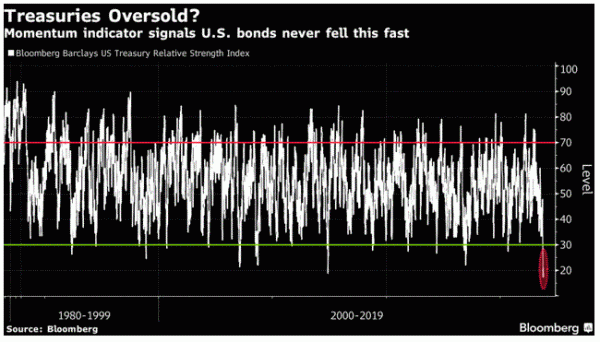
….related from Larry Edelson: Biggest loss in 26 years …


